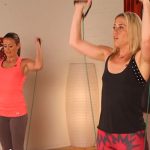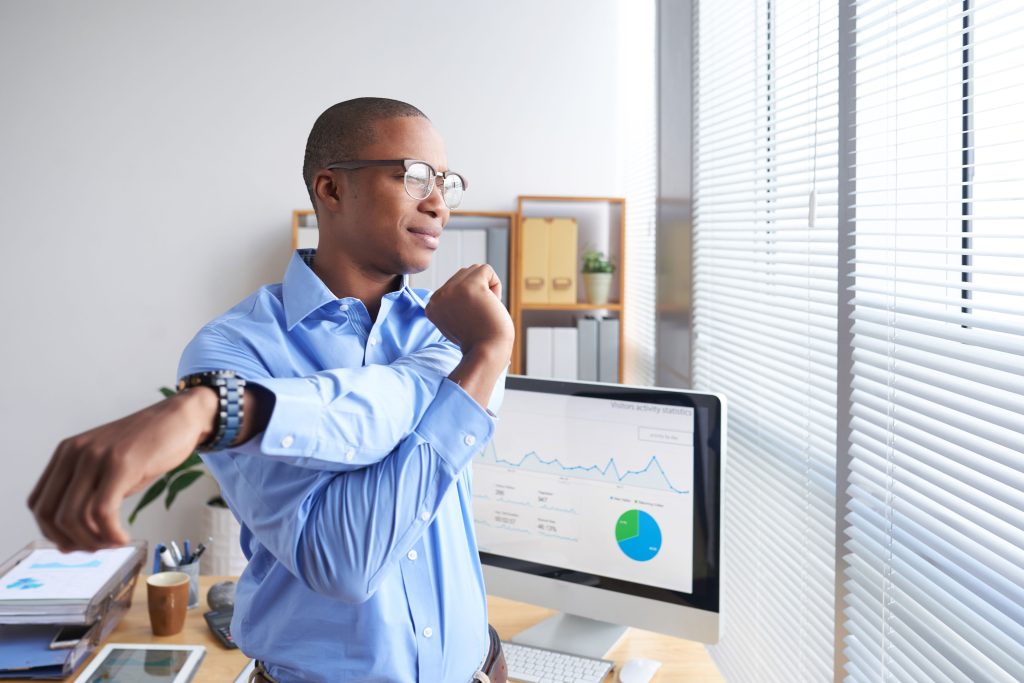
Humans are meant to move but advancements in how we work have tied us to our desks and mobile devices.
More and more, we associate productivity with taking action on a laptop or speaking in the boardroom while seated.
In an office environment, we’ve divorced ourselves from physical work and free movement. Perhaps this is because working with one’s hands was seen as a relic of early industrialism and the domain of blue-collar workers when the modern office was established. It’s time to question this mindset.
While office workers primarily use their minds to do their jobs, a healthy body is linked to a healthy mind. People are happier when they’re fit and their mental health receives a boost as well. From both the perspective of a leader and an employee, it’s best to have a fit team.
You don’t have to convince your boss or your co-workers. Your first duty is to focus on your own well-being.
Even when your workspace, schedule, or management makes it challenging there are always ways to fit in meaningful exercise at work. Often it just doesn’t look like exercise, thus why you can do much of it unnoticed.

Ideas that’ll Boost Your Activity
You probably came here for practical solutions. So, let’s dive in.
1. More Short Breaks Trumps Long Breaks
Sitting for long periods is one of the biggest pitfalls to avoid.
When you have a spare moment, take the opportunity to get up out of your chair. Micro breaks as simple as grabbing a coffee for yourself and a client or visiting the bathroom will recharge your mind and body adequately for the next challenge.
2. Lunch Breaks Give You the Time You Need
A 2018 study found that the average lunch break in America is 39 minutes. That’s down from 43 minutes in 2014, but still enough time to take a short walk, move, or do some stretches.
It’s tempting to sit down and relax during lunch. However, sitting is exactly what you’ve been doing most of the day. Your body needs a change!
Your lunch break is the best window of time you have to accomplish some physical activity. You can leave the building and do a real workout outside as weather permits. There’s a boundless amount of exercise you can do without equipment. If you want to level up, resistance bands are lightweight, easy to pack, and just as effective as dumbbells.
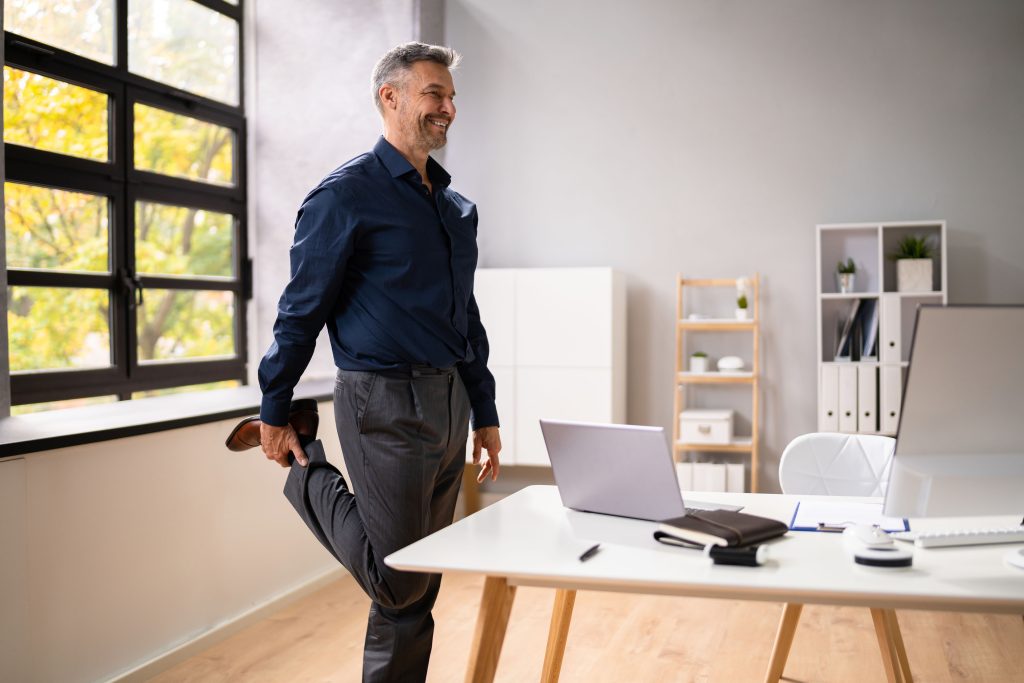
3. Move at Your Desk
Sometimes getting up to do stretches is exactly what the doctor ordered. Depending on your workspace you might be able to do simple exercises like arm swings or jumping jacks without attracting too much attention.
An under-desk elliptical or exercise bike offers a few key advantages. First and most importantly, you can do it while working. Secondly, whether you’re accomplishing anything or not at your job it can be done under the radar.
It shouldn’t but exercising near your desk makes many people feel self-conscious because not enough people do it. Thus, it makes you a little different and let’s face it, many office cultures are pretty stiff. An under-desk machine helps you manage that.
4. Take the Stairs
It might seem like an inconsequential decision, and it is if you only do it sometimes. However, if you commit to taking the stairs at every opportunity, it makes a notable difference.
It’s surprising but stair climbing burns more calories than jogging. Just going up two flights of stairs per day results in 6 lbs. of weight loss in a year.
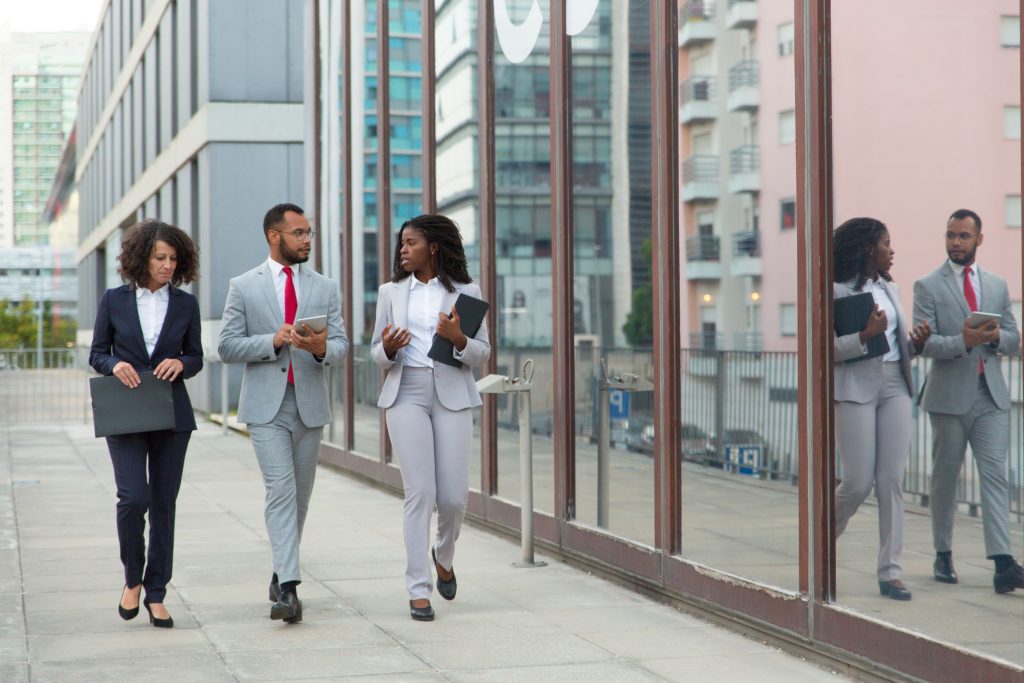
5. Have Meetings Standing Up or While Walking
Here’s one for leaders to pay special attention to. Meetings are expensive as they cost the company the time of everyone who participates. Having quick status update meetings while standing up is not only good for everyone’s wellbeing, it also makes meetings only as long as they have to be.
Next, is the favorite of the late Steve Jobs, the walking meeting. If you plan to meet with someone one-on-one, why not take the opportunity to step out of the office? Walking meetings relieve stress, encourage clarity of thought, and stimulate heightened creativity.
6. Get a Stand-up Desk or Work While Standing
Plenty of the tasks you do at your desk job can also be completed standing up. For example, many people use a mobile phone as their primary office phone. Thus, not only is making a call an opportunity to get up but also to move around the office. Better yet, step outside the building for a breath of fresh air.
Those who can make decisions about their workspace such as remote workers, leaders, and entrepreneurs should consider getting a stand-up desk.
Sitting while working on computers Is a picture we’ve cemented in our minds. Having a stand-up desk might seem like a big change you might not be able to live with day in and day out. However, there are likely other places to sit down and use your laptop or phone. Transitioning into using a standing desk is easier than many realize.



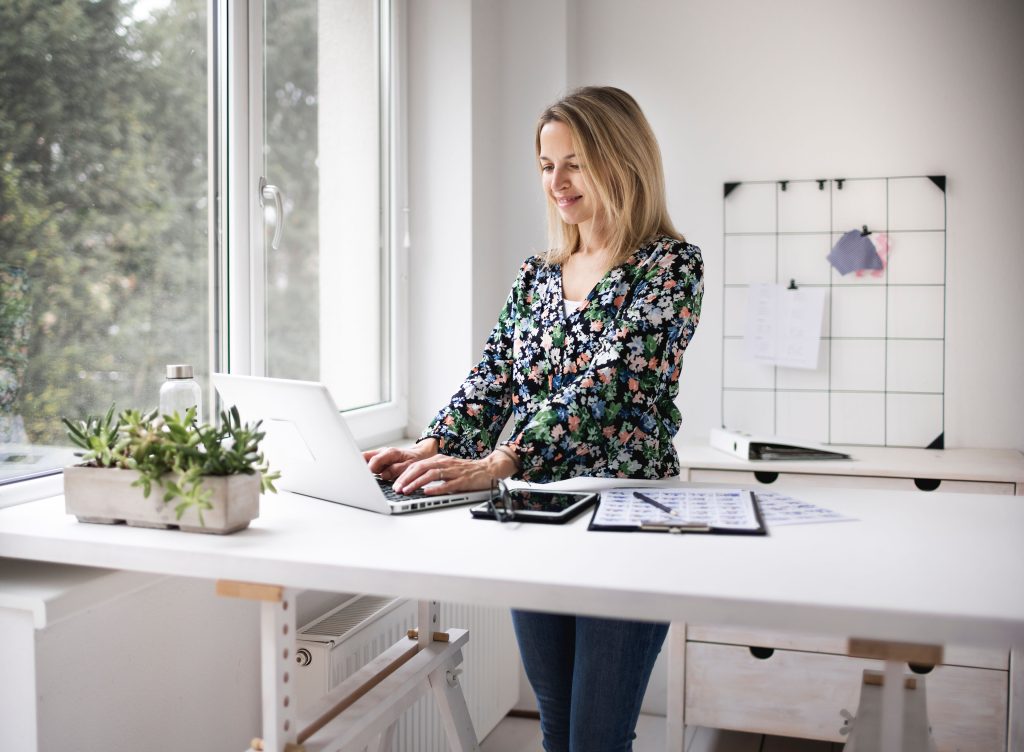
Small Shifts to Your Daily Habits Make a Big Difference
With looming deadlines, demanding bosses, and a stack of projects in your inbox, getting exercise during working days can seem impossible.
In actuality, there are more spaces to fit in some exercise than many believe. They simply need to make it a priority. Your employer’s goals are your goals too, but once you integrate personal goals that don’t necessarily have to be accomplished outside of work, life gets good.
Taking Breaks Should Not Only be Acceptable but Encouraged
Many office workers don’t take enough breaks because they believe their supervisors will view them as dedicated and a greater asset to the company. Other people get so wrapped up in their work that they neglect their physical needs. Yes, enjoying your work has some drawbacks.
Science has proven that taking breaks leads to higher productivity. It’s often counterinitiative for supervisors, but if workers tend to their physical needs, they’ll get more done and the quality of the work will increase.
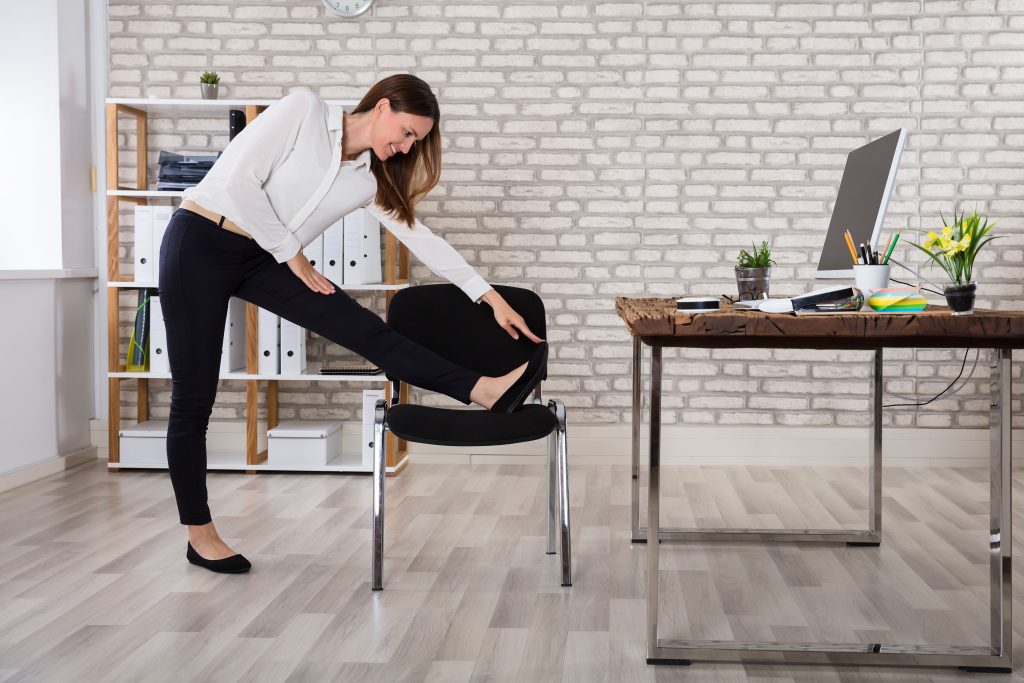
Conclusion
Desk jobs can take their toll on your body. It’s one of these things that creeps up on us in life. Yes, sitting at a desk for several hours a day might not seem harmful in the short term but when you consider you’re doing it for about 260 working days per year, it’s significant indeed.
The modern workspace is slowly improving. Standing desks, under-desk exercise machines, and a greater awareness of the ill effects of sitting are moving us in the right direction. However, office workers need to be proactive about moving their bodies. No one is going to block out time for it but you!



